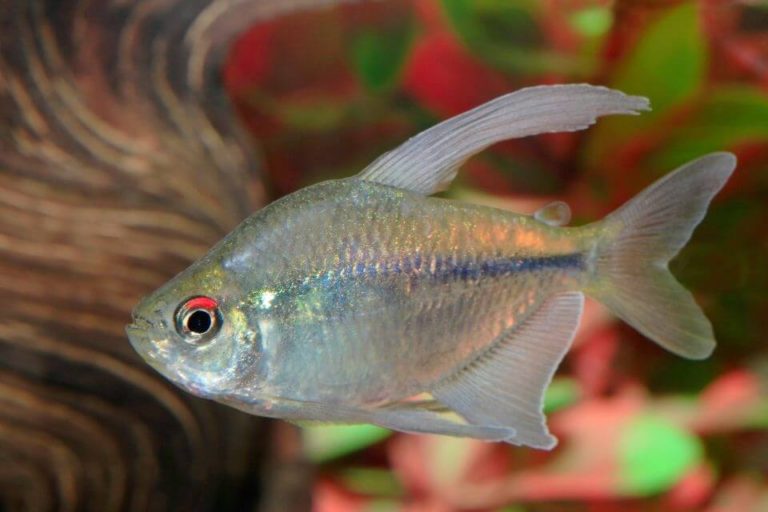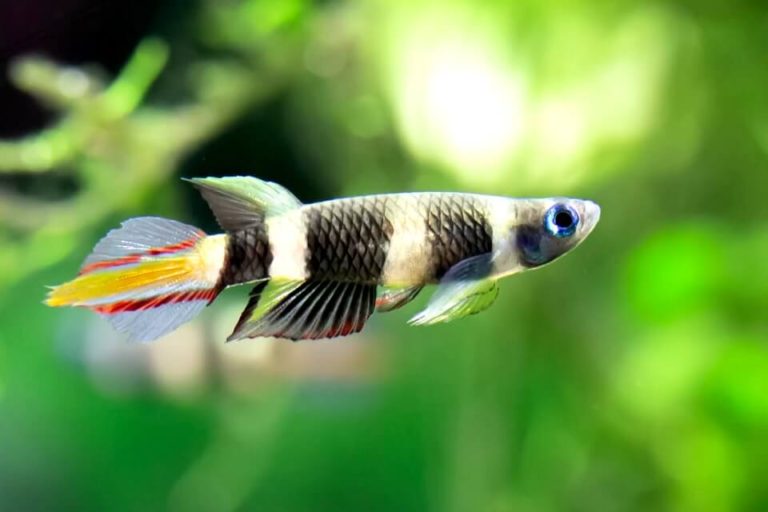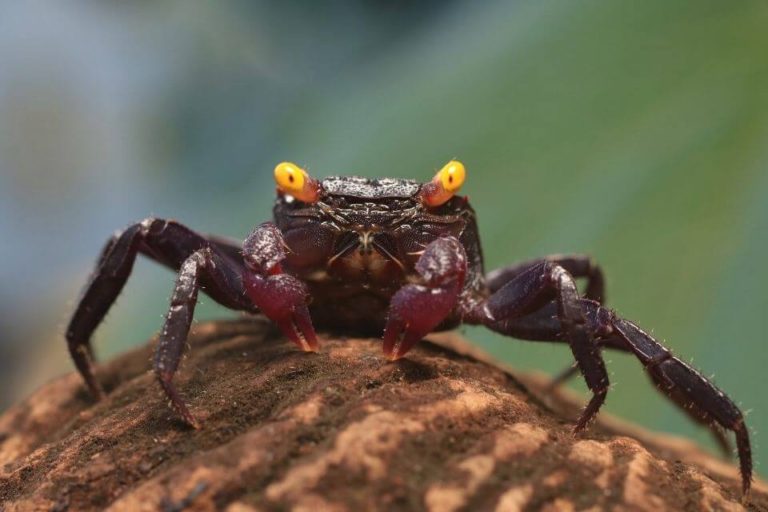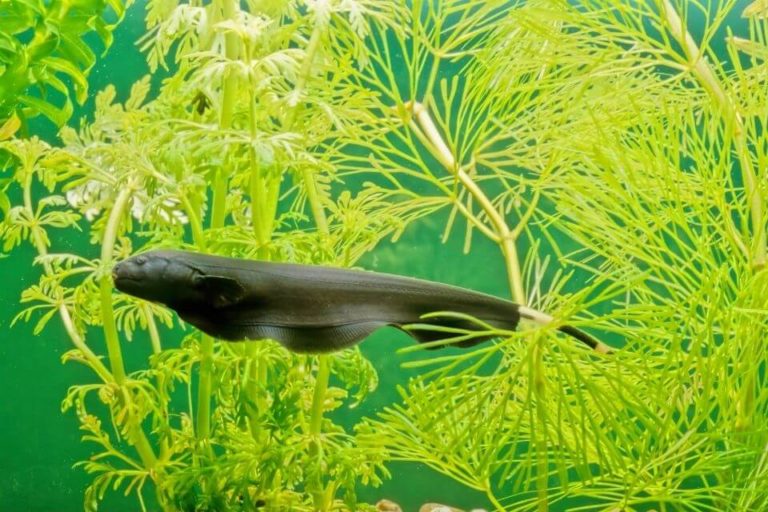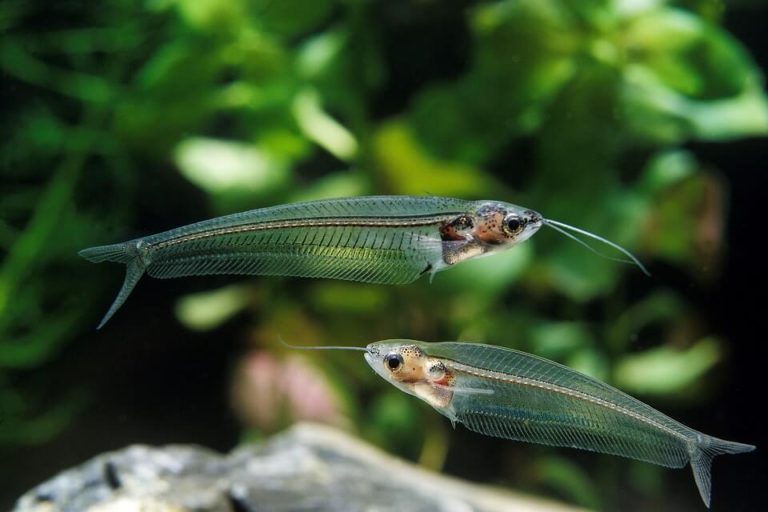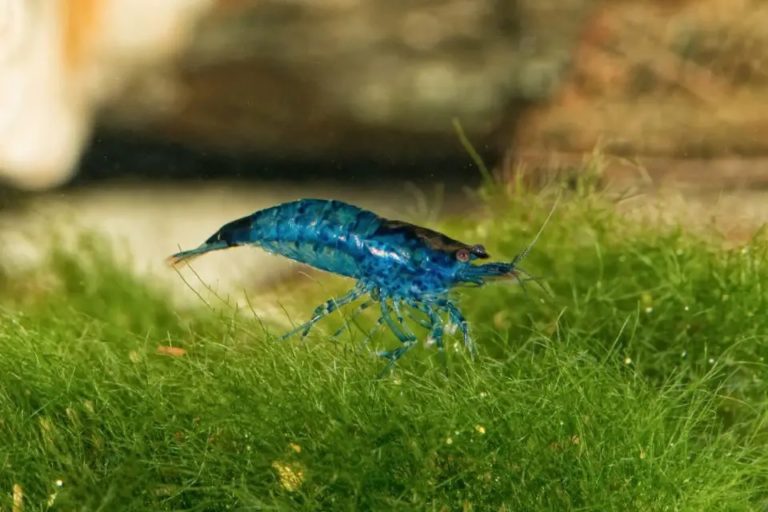Pygmy Cory Species Profile and Care Guide: Tank Setup and Suitable Diet
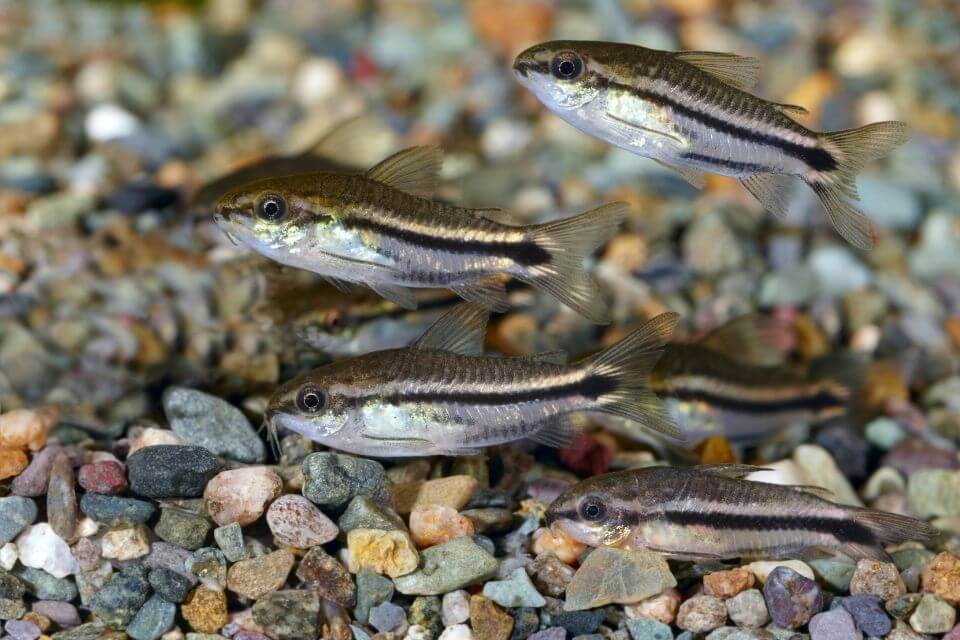
Pygmy Corydoras is an adorable small fish and one of the most reared Cory in Aquariums. The Corydoras is a very familiar fish genus among aquarists and fish hobbyists due to its wide array of excellent freshwater tank fish.
This fish is packed with all the appealing qualities of Corys and much more.
This well-behaved, peaceful fish has won the hearts of many tank fish keepers around the world and there is no single reason why you should not try it as your next fish.
It is the perfect schooling fish for absolutely any community tank and will specifically appeal to beginners in fish keeping.
To know why this fish is highly recommendable, read through this care guide. We’ll cover everything about the Pygmy Corydoras, from the origin, appearance, typical behavior, tank care, and conditions to breeding.
If you’ve always had questions about this fish in your mind, get ready as we are about to answer all of them.
| Quick Facts: | |
|---|---|
| Common Names | : Pygmy Corydoras, Pygmy Cory, Pygmy catfish, Dwarf catfish, Micro catfish |
| Origin | : Tropical inland water bodies of South America |
| Family | : Callichthyidae |
| Scientific Name | : Corydoras pygmaeus |
| Care Level | : Easy/Beginner |
| Temperament | : Peaceful |
| Social | : Schooling fish |
| Diet | : Omnivores |
| Size (average) | : 1 - 1.3 inches |
| Lifespan | : Up to 3years |
| Breeding | : Egglayer |
| Minimum Tank Size | : 10 gallons |
| Tank Environment | : Freshwater, Sandy substrate, Rocks, Driftwood, Live aquarium plants |
| Temperature | : 72 – 79 °F (22 – 26 °C) |
| Water Hardness | : 2 - 15 dKH |
| Water pH Level | : 6.0 - 8.0 |
Overview of Pygmy Corydoras
Scientific names: Corydoras pygmaeus
Other names: Pygmy Cory, Pygmy catfish, Dwarf catfish, Micro catfish
The Pygmy Cory is a small-sized fish from the subfamily Corydoradinae and family Callichthyidae. This fish species is native to South America. Due to its appealing characteristics, it is today a common pet in many hobbyist homes.
The color form for this fish is Silver with two horizontal black lines. Generally, the Pygmy Corydoras is all you know about the Corydoras catfish except for the small size. A well-cared-for Pygmy Corydoras will only grow up to 1.3 inches and live for around 3 to 4 years.
Keeping and breeding this fish is easy. The fish does not call for much swimming space due to its small size. The fish is also non-aggressive and peaceful and lives perfectly in a community tank of other small-sized fish species.
This miniature Corydoras fish species love to live in the school of 6 or more members. You will find them swimming in these schools in the mid to bottom level of your tank.
Pygmy Corydoras are omnivores and will not have problems with any type of food as long as it is finely cut to fit in their tiny mouths.
When the fish gets the correct feed and kept in the right tank conditions, its immune system is boosted and this helps head off many diseases that affect freshwater tank fish.
Origin, Distribution, And Availability
The Pygmy Corydoras is endemic to South America, specifically the Madeira river basin in Brazil. Other inland water bodies where this fish is populated are the Nanay River’s tributaries in Peru and the tributaries of the Aguarico River in Ecuador.
Note that the tropical conditions in this region are highly unpredictable and the water temperature, flow, and turbidity vary from time to time. This means that the Pygmy Corydoras are highly adapted to live in a wide array of tank conditions.
The Pygmy Corydoras was first described in the 1900s at a time when many of the Corydoras species were correctly identified. Before this time, there was only believed to be one Micro Corydoras species; the Corydoras hastatus.
In the natural habitats, the Pygmy Corydoras will be found co-existing with other Cory in the bottom section and near the river banks. The fish loves water bodies with a sandy substrate, lots of hiding trees, fallen branches, vegetation, and creeks.
Anyone who wants to keep this fish in tank environments should try as much as possible to replicate these conditions.
With regards to distribution, the fish was first distributed throughout the South American Continent, after which it was introduced to the world tank fish market.
In pet stores, this fantastic fish retails at around $2.
Pygmy Corydoras Typical Behavior
If you want a non-aggressive fish that will live with other small tank fish in a community aquarium peacefully, the Pygmy Corydoras is just that.
This adorable, shy fish loves to live and swim in a school of at least 6 members. For this fish, the larger the group, the better. You can even keep them in groups of 10.
Typically, a school of Pygmy Corydoras will swim at the midsections and sometimes at the bottom of the freshwater tank. When adding decorations to your tank, you should not crowd the mid-section to leave enough space for the fish to swim.
When the fish is in spirit, it loves to move to the tank’s bottom and burrow into the substrate. To respond to this behavior, it is advisable to add a fine-grained substrate that won’t damage this fish’s barbels in the process.
Pygmy Corydoras are facultative breathers meaning that they can breathe atmospheric air and take in oxygen when the water is oxygen-deprived. You will see them swim up to the water surface and take gulps of air.
No matter how interesting this behavior sounds, it is an effective mode of breathing for the fish. The water quality should be maintained at the required level for effortless oxygen intake.
Characteristics of Pygmy Corydoras
It is worth your time reading its basic characteristics to know much about these fish species. Let move on to reading more about Pygmy Corydoras species.
Appearance, Colors, and Special Markings

The Pygmy Corydoras looks more like the Corydoras catfish except for the size. Its miniature size is what makes this fish unique and more suitable to keep in a small community tank.
The fish has a pair of barbels (which can be viewed as long considering their tiny size) on the maxilla and mandible. The barbels help the fish to search for food properly. The males also use the barbels to caress any receptive females before mating.
Since the barbels are sensitive to the sharp substrate, you should keep their tank’s substrate as fine as possible. The water quality should also be maintained at the required quality as bacteria may also damage the fish’s barbels.
In terms of color form, the fish’s body is elegantly silver, but shades are expected due to breeding and adaptations. Some Pygmy Corydoras have an olive drab theme with a silvery finish.
The fish also has a black marking that runs horizontally on their body from the snout to the tail fin. A thinner black line runs just as the prominent black marking but lowers down the body (from the abdominal fin to the tail fin).
All the fins for this fish are transparent- another unique feature that makes them look so delightful when they swim in a school.
Even though Pygmy Corydoras do not offer much in terms of colors and markings, their small size adds a cute appeal to a tank.
Pygmy Corydoras fry has vertical stripes on their sides when they are hatched, but these marks fade as they grow. Eventually, the stripes are replaced by the horizontal lines described above.
Size: How Big Do Pygmy Corydoras Get?
The Pygmy Corydoras can grow to a length of up to 1.3 inches. Note that this size can only be achieved if the tank conditions are close to ideal. Typically, the Pygmy Corydoras you will find in many home aquariums are 1 inch long for the females and 0.75 inches long for the male fish.
It is good to note that females are generally broader than males and not just when carrying eggs.
Lifespan
The lifespan of Pygmy Corydoras is around 3 years, but this can be lower or higher depending on tank conditions, water quality, and the quality of feeds given.
Aquarium Care and Conditions for Pygmy Corydoras
Tank Conditions and Care
Even though the Pygmy Corydoras is a relatively hardy fish, it requires some level of tank conditioning.
First, the Pygmy Corydoras is sensitive to bacteria and you should take preventative measures such as adding Methylene blue (anti-fungal, anti-bacterial, and anti-parasitic) in their water.
The fish is also not so tolerant to ammonia, nitrates, and nitrites and hence a sound filtration system should also be included in their tank set up.
Additionally, cleaning the tank should be done routinely to remove the leftover food and any decaying plant matter. Vacuuming of the substrate and frequent water tests are also necessary to keep the water quality at the required level.
There should also be proper circulation in the tank, or otherwise, a biofilm will accumulate, compromising the fish’s breathing.
Tank Size
A 10 gallons tank is enough to keep 4 to 10 Pygmy Corydoras. Keep in mind that this is the required group size for a school of Pygmy Corydoras. A larger tank will definitely be needed if the fish will be kept in a community of other fish species or if more than two groups will be kept in a single tank.
Since this, a tiny fish (mainly 1 inch in length), a maximum of 1 gallon per fish is more than enough. The fish is also highly active and a longer tank is more preferable to a taller tank.
Tank Setup
Pygmy Corydoras prefer dim-medium lighting. Bright light heightens their metabolic activities and this may stress them out. Floating planting can also aid in diffusing out any excess light in the tank.
For this fish tank’s bottom, please stick to a fine sandy substrate. If you use rough sand or any other materials such as rocks, its barbels may get damaged. This can significantly compromise the fish’s general health as proper feeding will not be possible.
In some cases, rot can sprout on the barbels’ base and spread to the fish’s face. This is a serious condition that may even cause death to your Pygmy Corys.
Even better, a sandy substrate will support burrowing; a typical behavior for these tiny fish.
The decorations should be limited to the sides. You can add a few driftwoods and logs as long as they do not take up space in the mid-section.
Suitable Plants
Pygmy Corydoras is just fine with most aquarium plants and will barely eat the live plant material. The most excellent plant category you can add to Pygmy Corydoras tanks is the Mosses.
The Dwarf Hairgrass, Amazon Swords, and Java Fern are also excellent choices.
These create a natural feeding ground that catches any free-floating materials in the water. In addition, the moss will never hurt the fish’s barbels. Even with this, you should still leave spaces where the fish can access the sandy substrate for burrowing.
Plants with large leaves should be included on the lower half of the tank as they provide sleeping and resting platforms for these fish. These plants are also crucial during breeding as they form great places where the females can place their eggs after fertilization.
Floating plants such as duckweed are also needed in a Pygmy Corydoras tank as they help diffuse bright light from the tank.
Water Conditions and Parameters
These are the perfect water parameters for a Pygmy Corydoras:
- Water temperature: 72 – 79 F (22 – 26 C)
- Acidity: 6.0 – 8.0 pH
- Hardness: 2 – 15 dKH
Water cycles should be done once or twice a month and should change 10 to 25% of the water.
Here, you should understand that this fish does not do well with frequent and abrupt water changes, a reason why only a small amount of water should be changed and after a relatively long period.
The real solution here to keep the tank clean with the maintenance practices discussed above.
Diet: What Should You Feed Pygmy Corydoras?
Pygmy Corydoras are omnivores and the belief that they are exclusively algae eaters is not true. They can thrive on a wide variety of plant-based foods as well as meaty treats.
In this regard, you have vast options when it comes to designing their food and you can feed them with foods you use for other fish as long as it is finely sized.
Even with this, they have their own share of favorite foods including daphnia, brine shrimp, plant foods such as finely chopped vegetables from your kitchen garden, bloodworms, and insect larvae. Commercial foods such as pellets and flakes should be used as their primary diet and the foods above as treats.
The fish may feed on the bottom directly from the substrate (pellets are better for this since they sink easily to the bottom) or come for the food at the water surface when in good spirit.
The Pygmy Corydoras should be fed several times a day with nutritious and high-quality foods at all times. Since the fish is more active at night, you should consider dedicating at least two feeding sessions during this time.
This fish is a slow eater and it is advisable to feed it with small amounts that will not stay long in the tank’s bottom and compromise the water quality.

Common Diseases of Pygmy Corydoras
Even though Pygmy Corydoras are fairly hardy, they will still be affected by freshwater health conditions when the water and food quality is poor. Common diseases for this fish include costia, bacterial infection, skin and gill flukes.
Anytime you notice weird behaviors such as lack of appetite and seclusion, you should isolate the fish from the community tank and treat them accordingly.
You may treat them with over-the-counter medications if you are able to figure out the infection by yours otherwise you may talk to your Vet immediately.
Pygmy Corydoras Gender Differences
There is nothing much to differentiate between a male and a female Pygmy Corydoras. In fact, the only sexual dimorphism they show is in body shape and size.
The females are rounder and larger, while the males appear thinner and smaller.
Breeding the Pygmy Corydoras
Breeding Pygmy Corydoras is not that complicated. Under the right tank and feeding conditions, these fish will comfortably mate and breed in their normal tank and hence the real hustle is caring for the fry.
To stimulate breeding, though, you need to frequently renew the water in their tank (this time up to 50%), sufficiently aerate it, and raise its temperature by 2 to 3 degrees from the normal range.
Raising the school to 10 to 12 Pygmy Corydoras will also help increase the chances of breeding. More plantations will also be needed in the tank to create plenty of platforms where the females can lay their eggs.
Note that these modifications only apply to a tank with no other members from a different fish family. So, if you have kept your Pygmy Corydoras in a community tank, you will need a separate spawning tank.
The spawning tank is also suitable when you have a small group of these fish as it increases their mating and spawning possibilities.
During spawning, a male will dance around a female and once he grabs her attention, he will caress her with the barbels and come into a T-position for the spawning to occur.
A female can lay around 30 to 50+ eggs in one round and holds several of them (2-5) in a pouch under the abdominal fins until the male fertilizes them. On fertilization, the female quickly finds a platform to place them. It takes 3 to 4 days for the eggs to hatch.
On hatching, the fry first feeds on their yolk bags for at least 3 days. Considering their tiny size, the offspring can only eat very fine food after that. You can use crushed flakes or infusoria for the offspring until they mature to eat adults’ foods.
Tank Mates for Pygmy Corydoras
The Pygmy Corydoras is a peaceful fish and will live peacefully with their own company as well as any similar-sized, non-aggressive, and gentle fish species. Since these fish barely fight back or nip the fins of the fish that stresses them out, it is imperative not to keep them with large, high-aggressive fish.
Excellent tankmates for this fish include:
- Endlers
- Otocinclus catfish
- Dwarf cichlids
- Chili rasboras
- Pencilfish
- Mature shrimp
- Cherry barbs
- Guppies
- Zebra danios
- Neons tetra
- Scarlet Badis
Frequently Asked Questions
How Many Corydoras Should Be Kept Together?
Many seasoned Pygmy Corydoras fish keepers recommend 4 to 10 as an ideal group size to keep in a 10 gallons tank. The more they are in a group, the better they will live and interact with each other.
They love schooling and when they swim in larger groups, they create scenery that is irresistible in a home aquarium.
Can Pygmy Corys Live with Bettas?
It depends on the character of the individual Bettas in your tank. If they are calm and peaceful, then there will be no problems keeping them with your Pygmy Corys. On the other hand, if your Bettas get aggressive, they could hurt the Pygmy Corys if kept together.
As a homeowner, it is always good to learn about the behaviors of every fish in your tank, as this will always guide you when making decisions to bring in a new member or group.
Are Pygmy Corydoras Aggressive?
Corydoras are non-aggressive, calm, and peaceful. If you have a fish of similar characteristics, they will form a very peaceful community when kept together.
Are Pygmy Corydoras Fin Nippers?
No, as their mouth structure and small size do not support this behavior. Also, the fish is entirely laid back and will barely fight back even when stressed out by other fish in the tank.
For this reason, it would only be fair to keep this fish with other small fish that are peaceful and non-aggressive.
Will Pygmy Corys Eat Shrimp?
Pygmy Corys are omnivores and will eat any meaty food in their environment. However, they can only eat shrimps that are small enough to fit in their mouth.
If the shrimps in your tank are large enough, it will be impractical for the Pygmy Corys to snack on them.
Are Pygmy Corydoras Hardy?
They are fairly hardy and will stay healthy as long as they are fed high-quality food and kept in stable conditions. Any extreme water and tank conditions would still affect their health and well-being.

Final Thoughts of Keeping Pygmy Corydoras
If you are looking for a peaceful schooling fish that will live in a fairly small aquarium, the Pygmy Corydoras is definitely an excellent option to choose from. As evident from this guide, the fish is not very demanding in terms of tank conditions.
As long as everything is kept at optimum levels, the Pygmy Corydoras will live happily without developing any health conditions.
The good thing with Pygmy Corydoras is that they are natural breeders and when you maintain the right feeds and tank conditions, they can do it by themselves.
Because of the high number of eggs the females reproduce, these fish can multiply quite faster and you may never need to visit the pet shop on acquiring your first stock.
In a nutshell, the Pygmy Corydoras is arguably one of the best community fish you can have in your home. Considering its low maintenance, excellent behaviors, and stunning look, we would recommend it for both professionals and beginners in freshwater tank fish keeping.


